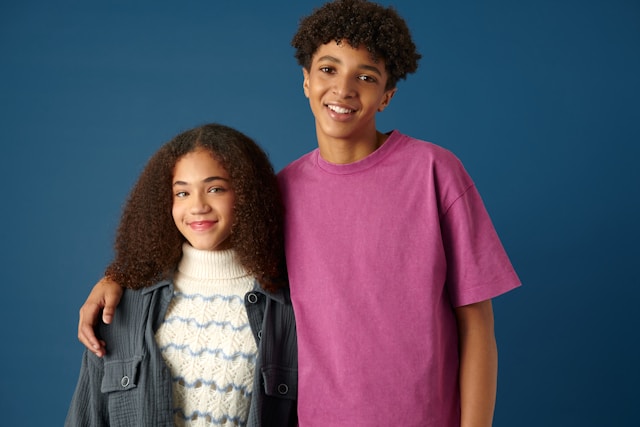
The question of how to best support children who have been removed from their biological families is one of the most complex and debated topics in foster care and adoption systems. For many children, the ultimate goal is to either reunite them with their birth parents or place them in a permanent adoptive home. Open adoption, in which adoptive parents and biological parents maintain some level of ongoing contact, is one model that has emerged in recent years to allow children to remain connected to their birth families.
The concept of open adoption is designed to allow children to maintain a positive relationship with their biological parents while being raised in a stable and loving adoptive home. For those considering expanding their family, becoming a foster parent or adopting can offer a fulfilling way to provide a child with the support they need. While open adoption may seem like an ideal solution, maintaining such relationships comes with both significant benefits and challenges for the child, the biological family, and the adoptive family.
In an open adoption there is some level of ongoing contact between the child, their birth parents, and the adoptive parents. This contact can vary greatly depending on the needs of the child and the comfort levels of the parties involved. In some cases, it may involve regular visits between the child and their biological parents, while in others, the communication may be limited to phone calls, letters, or shared information about the child’s life.
Open adoption is seen as a way to offer children the best of both worlds, remaining with their adoptive families for stability and love, while also maintaining their connection to their biological roots. This is particularly important for children who have been removed from their birth families due to trauma, neglect, or other challenges. While closed adoption, where there is no contact with the biological parents, has historically been the more common route, open adoption has gained traction as a way to address the emotional needs of the child.
The connection children have with their biological parents can play a critical role in shaping their identity. For children adopted from the system, the experience of being removed from their birth family can create a complex sense of self. Maintaining a relationship with biological parents can provide children with important answers to questions about who they are, where they come from, and what their heritage means.
One of the most significant benefits of ongoing contact with biological parents is that it allows children to better understand their heritage and cultural background. For children who were removed from their biological families at a young age, the absence of this information can create a sense of identity confusion. Knowing where they come from, who their family members are, and understanding their cultural and ethnic background helps children build a stronger sense of self.
This knowledge is especially important as children grow older and begin to form their own self-concept. Children often want to know why they were placed in foster care or adopted, and understanding their birth family’s story—when done in a healthy and sensitive way—can help fill in the gaps in their personal history.
For many children in foster care, the process of being removed from their birth families can lead to feelings of abandonment or rejection. The trauma associated with being separated from biological parents can leave children with emotional scars that affect their sense of worth. When children are allowed ongoing contact with their biological parents, it can help alleviate some of these negative emotions.
This connection offers children reassurance that they are not entirely forgotten by their birth parents. Knowing that their birth parents still care about them and want to be a part of their lives can help children feel less abandoned and more secure in their relationships with their adoptive parents.
One of the benefits of open adoption is that it allows children to develop a relationship with their birth parents, which can lead to better emotional and psychological outcomes in the long run. Children in open adoptions are able to form positive memories and experiences with their birth families, while also experiencing the security and love of their adoptive homes.
By maintaining healthy relationships with biological parents, children can develop an understanding of what a functional relationship looks like, which can contribute to their own ability to form and maintain relationships as they grow older. In this way, open adoption supports the child’s emotional development, providing a model for healthy interactions with both their adoptive and biological families.
Open adoption offers numerous benefits for children, particularly those coming from foster care. These benefits include:
For children who may have been traumatized by being removed from their birth families, the sense of security that comes from knowing they have ongoing contact with their biological parents can be incredibly comforting. This reassurance helps children feel more stable in their adoptive homes, knowing that they have a connection to their past and that their adoption is not an abandonment.

Children adopted from foster care may face unique challenges in forming their identity, particularly if they were removed from their birth families at a young age. Open adoption helps mitigate these struggles by providing children with a clearer understanding of their background. This connection to their birth families enables them to reconcile the different parts of their identity, being part of their biological family, yet also part of their adoptive family.
As children in open adoptions grow older, they may face difficult questions about their adoption and birth family. The open line of communication allows adoptive parents and children to have honest and open discussions about their past, reducing feelings of confusion and isolation. This transparency allows children to grow up with a better understanding of their life story, which can make the transition into adulthood smoother and more manageable.
While open adoption can have significant benefits for the child, it is not without its challenges. Maintaining contact with biological parents requires careful planning, open communication, and strong boundaries between the adoptive and biological families. Below are some of the challenges that can arise in open adoptions:

Children in open adoptions may experience conflicting emotions about their relationships with their birth and adoptive families. This can be particularly difficult for older children who have memories of their biological parents and may struggle with feelings of loyalty, guilt, or confusion. For example, a child may feel torn between their adoptive family, who they love and rely on, and their birth family, whom they may still feel emotionally attached to.
These complex feelings can create challenges for children as they navigate their relationships with both sets of parents. Adoptive parents need to be understanding and supportive, helping their child process their emotions and find a balance between their relationships with their biological and adoptive families.
Open adoptions can sometimes place strain on the relationship between birth and adoptive parents, particularly if there are differing expectations or boundaries. While the goal is to foster a positive relationship, misunderstandings and conflicts can arise over issues such as frequency of contact, involvement in the child’s life, and the level of parental authority. Both sets of parents must work together to ensure that the child’s well-being remains the primary focus.
Clear boundaries and open, honest communication are crucial in maintaining a healthy relationship between the adoptive and biological parents. It is essential to have a shared understanding of what the adoption and ongoing contact will look like, and to be flexible enough to adjust if circumstances change.
While open adoptions are often beneficial for children, they can also pose the risk of disruption, particularly if the child becomes confused or overwhelmed by the contact with their biological parents. In some cases, ongoing contact can trigger unresolved trauma or lead to emotional difficulties, particularly if the biological parents continue to exhibit behaviors that are unhealthy for the child.
For some children, the inconsistency or instability of their biological parents’ lives may make it difficult to maintain a healthy relationship. Adoptive parents must be prepared to provide extra emotional support in these situations and advocate for the child’s best interests if the contact becomes detrimental to their well-being.
Ongoing contact with biological parents in open adoptions offers children significant emotional and psychological benefits, especially for those coming from foster care. It helps them develop a stronger sense of identity, maintain connections to their roots, and heal from past trauma. However, open adoption is not without its challenges, and it requires careful attention to boundaries, emotional support, and clear communication between adoptive and biological parents. When handled with care and respect, open adoption can provide children with the best of both worlds—a loving, stable adoptive family, and a connection to their birth family that helps them navigate their unique life journey.